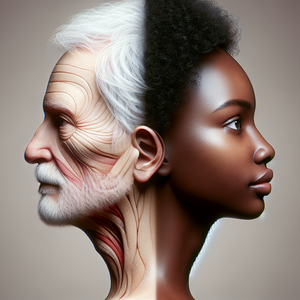The Art of Bitcoin: How Digital Currency is Inspiring a New Wave of Creative Expression

At the forefront of this artistic revolution is the rise of digital art and Non-Fungible Tokens (NFTs). NFTs have changed the landscape by allowing artists to tokenize their work, creating digital certificates of authenticity that can be bought, sold, and traded on various platforms. This innovation empowers artists to directly monetize their creations without relying on traditional galleries or intermediaries. For instance, Beeple, a digital artist, made headlines when his NFT artwork sold for a staggering $69 million at Christie's auction house. This sale not only underscored the growing acceptance of digital art but also highlighted how Bitcoin and blockchain technology facilitate a new model for artistic ownership. Artists can now reach global audiences, engage with collectors directly, and retain a percentage of sales through royalties on secondary market transactions. This model not only increases the financial viability of artistic creation but also democratizes access to art, allowing artists from diverse backgrounds to gain recognition and support.
Artists Embracing Bitcoin as a Medium
Beyond NFTs, artists are experimenting with Bitcoin as a medium itself. Some creators are incorporating the currency into their work, using it to explore themes of value, scarcity, and the nature of money. For example, artists have created pieces that visualize Bitcoin transactions, highlighting the currency's decentralized nature and the anonymity it offers. These works challenge viewers to consider the implications of a world where traditional currencies are replaced by digital alternatives. Moreover, performance artists are embracing Bitcoin to create immersive experiences that engage audiences in discussions about the future of finance and creativity. By integrating Bitcoin into their performances, these artists are not only showcasing their work but also prompting viewers to reflect on the broader societal changes brought about by cryptocurrency. This interplay between financial themes and artistic expression invites a deeper understanding of how our perceptions of value are evolving in the digital age.
Collaborations and Community Building
The Bitcoin art movement is characterized by collaboration and community. Artists and technologists are coming together to create innovative projects that merge finance with creativity. Blockchain-based platforms like Art Blocks allow artists to generate unique, algorithmically-created artworks that are then minted as NFTs. This collaborative approach enables a diverse range of voices to be heard, fostering an inclusive environment where creativity thrives. Furthermore, Bitcoin has become a medium for fundraising in the art community. Artists are using crowdfunding platforms that accept Bitcoin to finance their projects, providing them with the freedom to pursue unconventional ideas without the constraints of traditional funding sources. This shift not only empowers creators but also democratizes the art world, allowing for a greater variety of artistic expressions. For instance, artists have successfully funded ambitious installations or community-oriented projects through Bitcoin donations, illustrating how this digital currency can facilitate new forms of patronage.
Challenges and Criticisms
Despite its potential, the intersection of Bitcoin and art is not without challenges. The volatility of Bitcoin can pose risks for artists relying on it as a primary source of income. The value of Bitcoin can fluctuate dramatically, which may lead to unpredictable earnings for artists who sell their work in this currency. Additionally, the environmental impact of Bitcoin mining has raised concerns, prompting discussions about the sustainability of this digital medium. Artists and collectors are increasingly aware of these issues and are seeking ways to address them through more sustainable practices and technologies, such as using eco-friendly blockchain alternatives.
The convergence of Bitcoin and art is creating a vibrant, dynamic landscape that challenges traditional notions of creativity and ownership. As artists continue to explore the possibilities of digital currency, they are not only redefining their craft but also paving the way for a new era of artistic expression. This intersection offers a fresh perspective on the value of art in a digital age, illustrating how Bitcoin can inspire innovation and foster community within the artistic realm. As we move forward, it will be exciting to witness how this relationship evolves and shapes the future of both art and finance, potentially leading to a more inclusive and sustainable creative ecosystem. The art of Bitcoin is just beginning, and its implications could resonate far beyond the canvas.
NFT Marketplace Manager
OpenSea, Rarible, Foundation
Responsibilities
Oversee daily operations of an NFT marketplace, ensuring smooth transactions and user experiences.
Develop marketing strategies to attract artists and collectors to the platform.
Collaborate with artists to facilitate the minting and promotion of their NFT artworks.
Skills Required
Strong understanding of blockchain technology and NFT ecosystems.
Experience in digital marketing and community engagement.
Excellent communication and project management skills.
Blockchain Art Consultant
Art Blocks, Async Art, art-focused blockchain startups
Responsibilities
Advise artists on how to effectively use blockchain technology to enhance their art practice.
Educate clients about NFTs, smart contracts, and digital ownership models.
Curate exhibitions that highlight the intersection of art and blockchain technology.
Skills Required
In-depth knowledge of blockchain technology and its applications in the art world.
Strong networking skills within both the art and tech communities.
Ability to articulate complex concepts to diverse audiences.
Digital Art Curator
Museums with digital art initiatives, online galleries, and art fairs
Responsibilities
Curate exhibitions featuring digital artworks and NFTs, focusing on innovative uses of technology.
Engage with artists and collectors to promote new digital works and trends.
Research and analyze emerging trends in digital art and cryptocurrency to inform exhibition themes.
Skills Required
Background in art history or curation with a focus on digital media.
Familiarity with NFT platforms and digital asset management.
Strong organizational and communication skills for coordinating exhibitions.
Creative Technologist (Art and Blockchain)
Tech-art studios, digital art collectives, and innovation labs
Responsibilities
Develop interactive and immersive art experiences that integrate blockchain technology.
Collaborate with artists to create innovative installations that utilize cryptocurrencies.
Conduct workshops and demonstrations to educate artists about the technical aspects of digital art creation.
Skills Required
Proficiency in programming languages like JavaScript or Python, and familiarity with blockchain APIs.
Creative problem-solving skills to merge technology and artistic expression.
Experience in digital media production or interactive design.
Cryptocurrency Compliance Officer for Art Organizations
Art galleries accepting cryptocurrency, auction houses, and art nonprofits
Responsibilities
Ensure compliance with regulations related to cryptocurrency transactions in art sales.
Develop and implement policies regarding the acceptance of Bitcoin and other cryptocurrencies.
Monitor and assess risk factors associated with financial transactions involving digital assets.
Skills Required
Knowledge of cryptocurrency regulations and compliance frameworks.
Strong analytical skills to assess risk and develop compliance strategies.
Experience in finance or legal compliance, particularly in the art sector.


